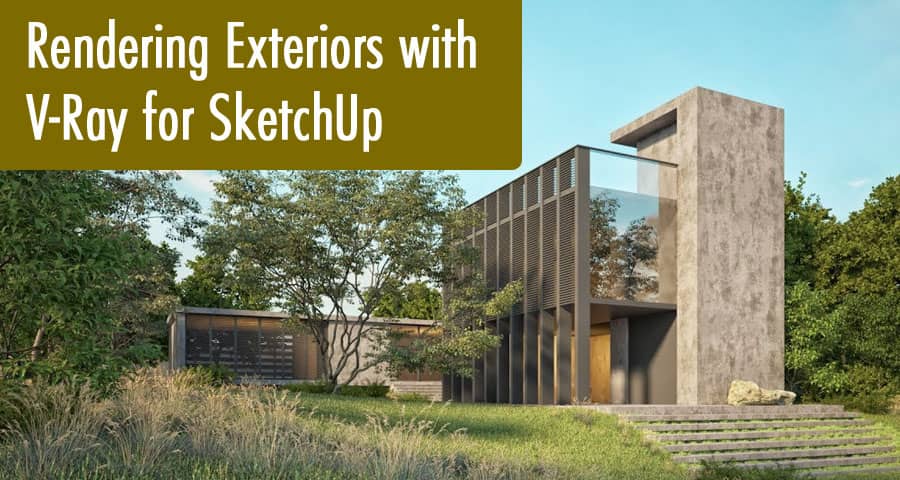Introduction
Welcome to the world of V-Ray for SketchUp! In this article, we will explore the key steps to rendering exteriors with V-Ray, a powerful rendering engine that can bring your architectural designs to life. Whether you are an architect, interior designer, or 3D artist, understanding the rendering process is essential for creating realistic visualizations. Let’s dive in!
Understanding V-Ray for SketchUp
- What is V-Ray for SketchUp?: Discover the capabilities and features of V-Ray, an industry-leading rendering software specifically designed for SketchUp.
- Advantages of Using V-Ray: Learn why V-Ray is the preferred choice for rendering exteriors and how it enhances the visualization process.
Setting Up the Scene
- Preparing the 3D Model: Ensure your SketchUp model is properly organized and optimized for rendering.
- Setting the Geographic Location: Explore how to set the correct location for accurate lighting and shadow effects.
- Establishing the Camera: Learn how to position the camera to capture the desired view and composition.
Adjusting Lighting and Shadows
- Using V-Ray Lights: Explore the different types of lights in V-Ray and how to create realistic lighting setups for exteriors.
- Natural Lighting Techniques: Discover how to utilize natural lighting sources, such as the sun and sky, to achieve stunning outdoor renderings.
- Shadow Settings: Master the control of shadows to add depth and realism to your exterior scenes.
Choosing Materials
- Material Selection: Learn how to select and apply appropriate materials to various elements of your exterior scene.
- Texture Mapping: Understand the process of mapping textures onto 3D objects to enhance their appearance.
- Applying Procedural Textures: Explore the use of procedural textures to add complexity and detail to surfaces.
Fine-tuning Render Settings
- Understanding Render Settings: Get acquainted with the different parameters and settings that impact the final render.
- Optimizing Render Time: Discover techniques to balance quality and render time by adjusting settings intelligently.
- Global Illumination: Harness the power of global illumination techniques to achieve realistic lighting interactions.
Using the V-Ray Frame Buffer
- Post-processing with the Frame Buffer: Learn how to utilize V-Ray’s Frame Buffer for post-processing effects, such as adjusting exposure and adding atmospheric effects.
Adding Final Touches
- Depth of Field: Explore how to apply depth of field effects to emphasize specific areas in your exterior renderings.
- Environmental Elements: Discover how to incorporate vegetation, people, and other objects to create a sense of scale and realism.
Troubleshooting Tips
- Common Rendering Issues: Address common challenges that may arise during the rendering process and learn effective troubleshooting techniques.
Conclusion
In conclusion, mastering the key steps to rendering exteriors with V-Ray for SketchUp allows you to create stunning visualizations that effectively communicate your design intent. By understanding the various aspects of V-Ray, such as lighting, materials, and render settings, you can elevate your architectural renderings to a new level of realism and impact.
FAQs
Can V-Ray be used for interior renderings as well?
V-Ray is a versatile rendering engine that can be used for both interior and exterior renderings. Its
advanced features make it an excellent choice for architectural visualization in any setting.
Is V-Ray compatible with other 3D modeling software?
V-Ray integrates seamlessly with various 3D modeling software, including SketchUp, 3ds Max,
Rhino, and more. This allows you to leverage its powerful rendering capabilities across different platforms.
Do I need a powerful computer to use V-Ray?
While V-Ray can benefit from a high-performance computer, it is designed to work on a wide range of hardware configurations. You can adjust the render settings to optimize the balance between quality and render time based on your system’s capabilities.
Are there any resources available to learn more about V-Ray?
Yes, there are numerous online tutorials, forums, and documentation available to help you learn more about V-Ray and its various features. Take advantage of these resources to enhance your skills and explore new possibilities.


